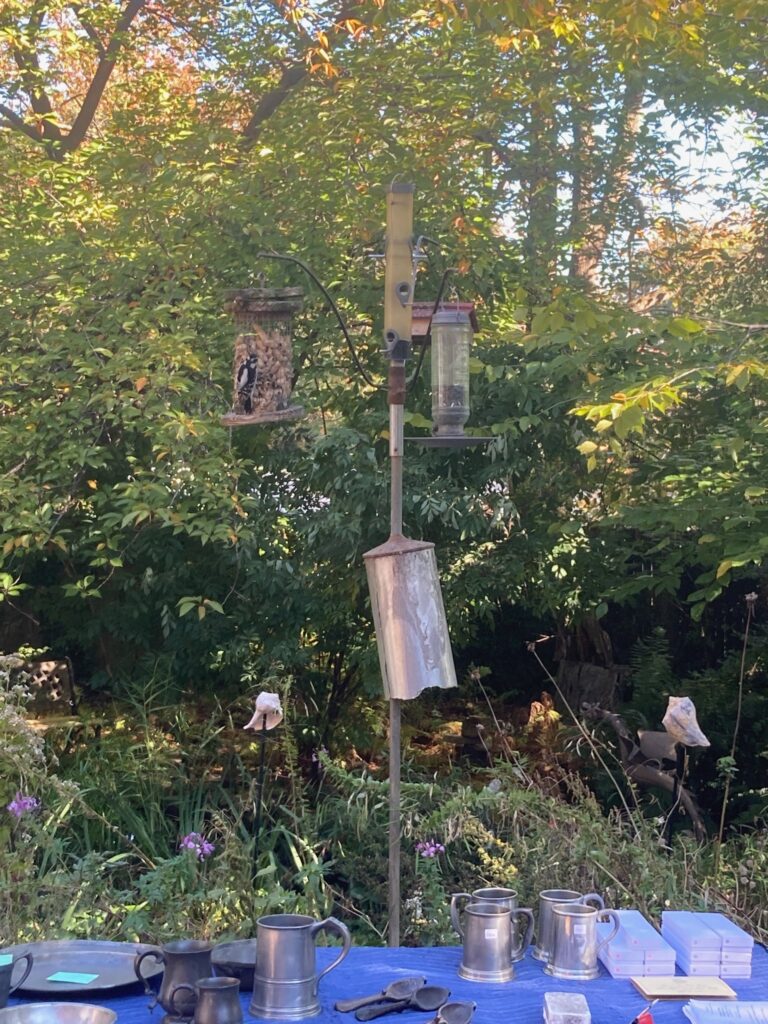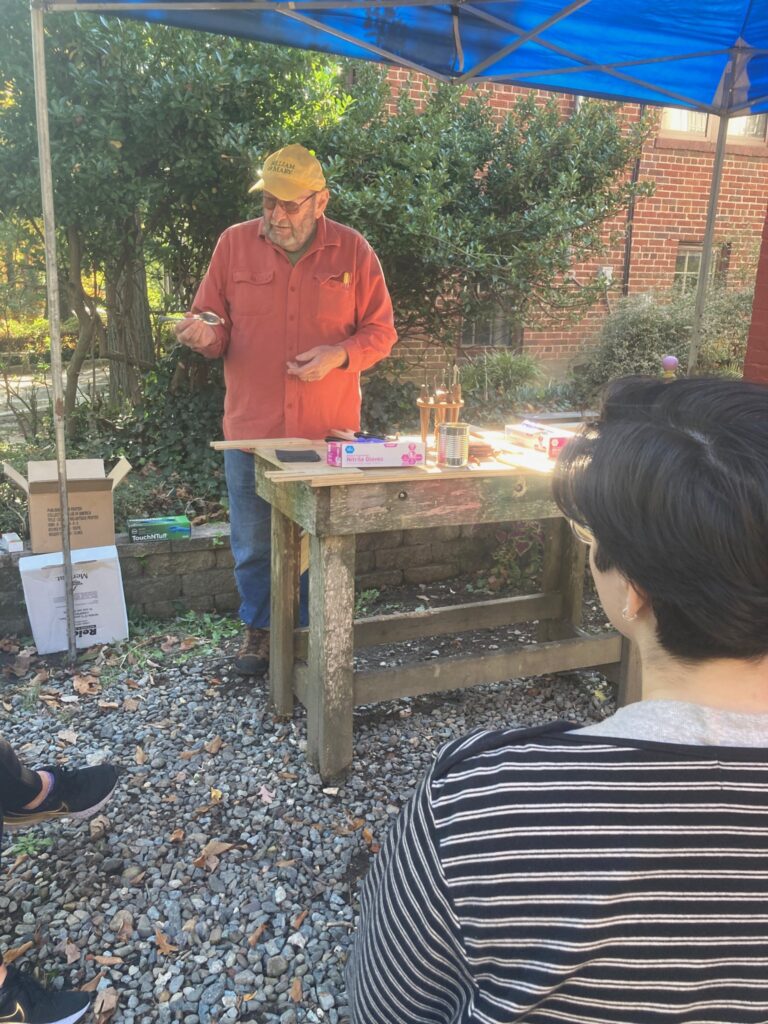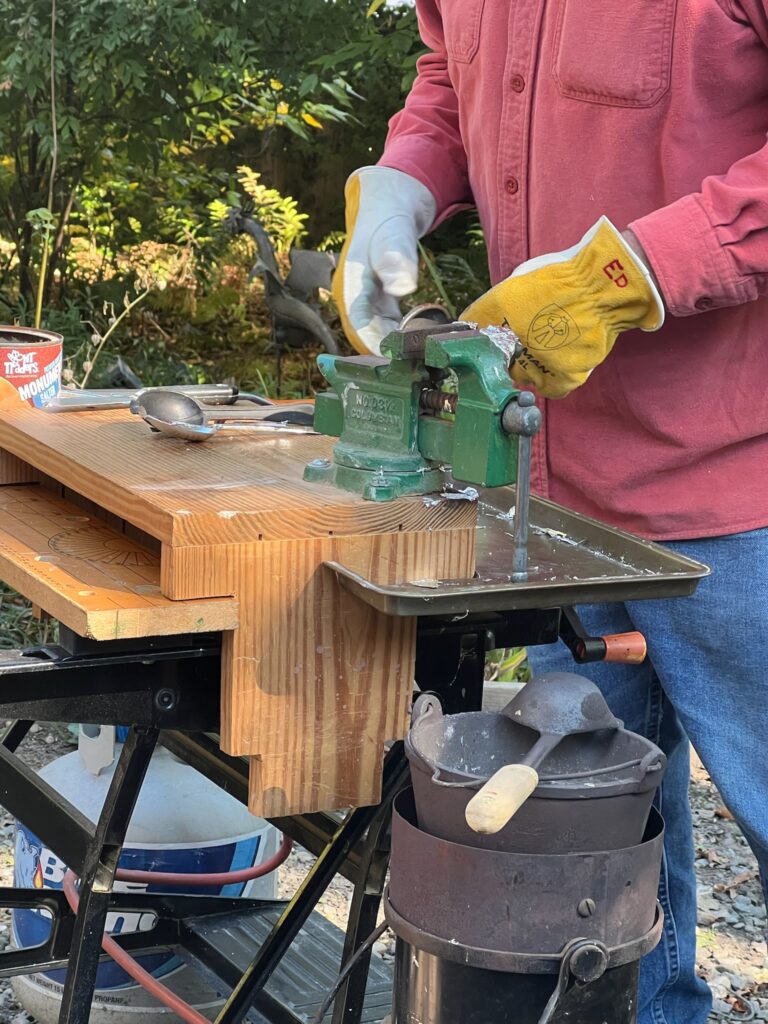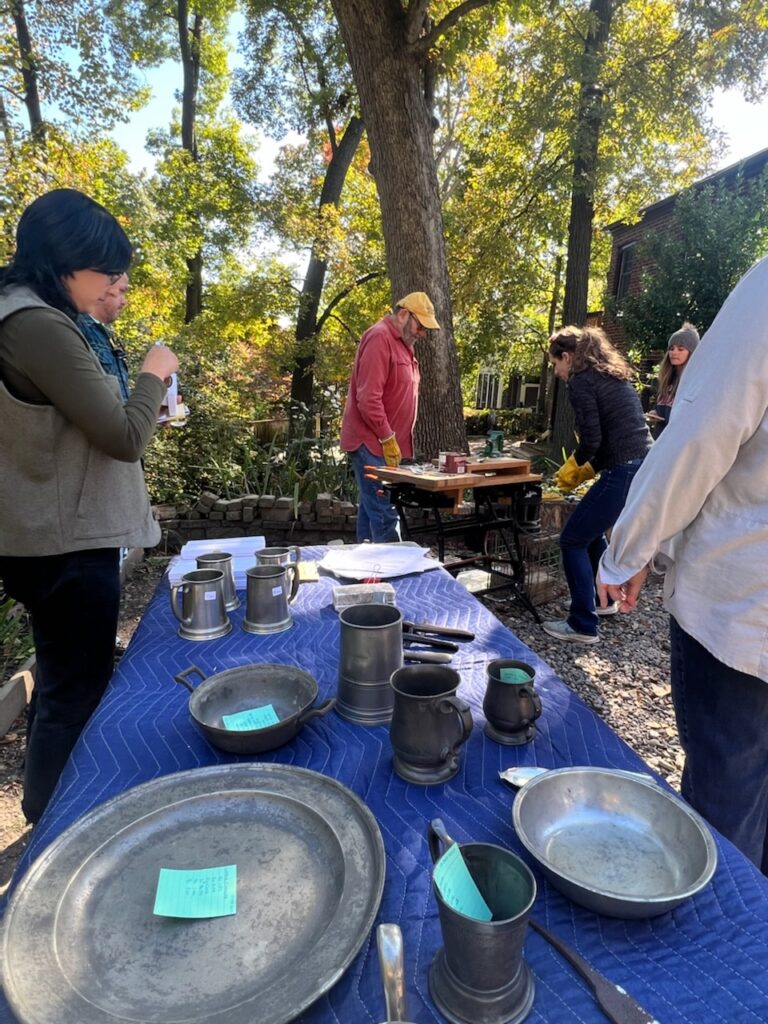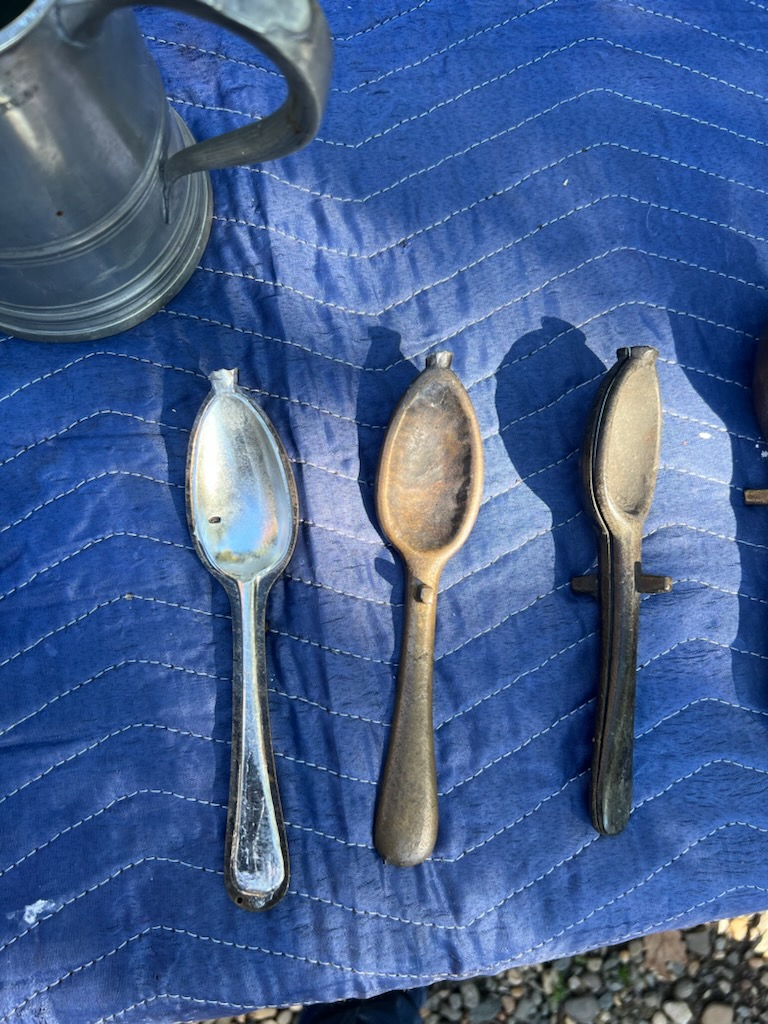Saturday, October 22, 2022
10:30am-2:30pm, Takoma Park, MD
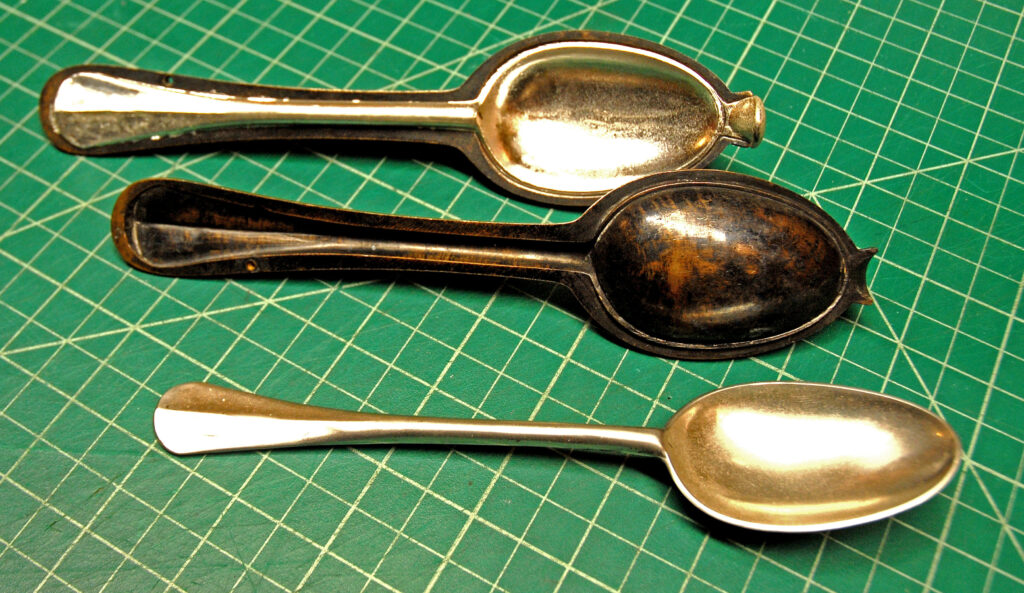
On the 22nd of October members of the Washington Conservation Guild met at a local residence to expand their knowledge of pewter. Seeing the fashionable pieces of history laid out on the table before them, the task seemed daunting at first.
As Material Culturalists and Conservators we were all curious to examine the elements from the pewter examples and molds that Ed McManus brought. Many people asked pointed questions about the rate of failure in casting, inclusions, air entrapment, and trace minerals but also the chemical properties of soldering. Our questions represented an expansive wealth of knowledge. Which took place under an outdoor canopy that Randy Cleaver set up for us.
Ed, standing next to his forge, spoke at his podium while managing the heat like a true tinsmith of centuries prior. By providing background detail he helped us identify an item’s owner, maker, and even location of origin. Next according to McManus was a personal evaluation of his own collections, followed by cultural analysis of utilitarian forms and subsequent significance of the objects surviving today. We learned the specifics of the Copeland spoon, the English Guild System, and Charles Montgomery categorization of metals. He also was able to lecture on the principle ingredients of pewter as alloys and solid solutions. But also with the cultural shifts, we know that marketing played a role in the naming of the material. Ed threw out terms like the queen’s metal, trifle, and what we would be working with—Brittania, a lead free pewter. We paid respect to the past craftspeople that sacrificed their own health and safety so we can use these materials and gravity cast them to make a familiar decorative form, the spoon.
He was so gracious with information, he handed out early pewter identification scholarships that he authored and included a Pewter Club hardcover book for each of us to enjoy. Removing the plastic almost immediately to look at the images and writing, I would have to state it is the finest survey and practical guide of Pewter. Ed aims to provide a physical, objective description, followed by a more subjective, emotional deduction of observing pewter. He showed us repairs that he made through a method called puddling. With the same reverence of reviewing silver forms, he went on to describe how pewter is finished with burnishing tools, and ways to detect tool marks and spinning in the metal.
With his speaking we all wondered how we would be able to reach the same results. Ed also spoke about casting examples and offered excellent explanations of hollow ware forms included in slush and sand casting. There are various examples that contain a level of complexity and expertise that were solved in one afternoon with Ed’s effortless knowledge of how molten cores can lead to endless configurations. It was truly eye opening to hold in our hands and see the gleam of the metal in person. Whether it’s the canvas of artists like John Singleton Copley, Jean Baptiste Chardin, and Jan Steen, we all were familiar with pewter before the workshop. However it was interesting to finally move to the final task of pouring our molds, burnishing and finishing this soft allotropic metal to a high polish.
As we all took turns placing our hands in the welding gloves, we took the ladle and skimmed the surface of the molten metal that was 400- 500 degrees to melt the ingots. Ed claimed that each bar contained enough material for 5 spoons. We all watched each other pour our first molds, supportive that each mold would contain a whole spoon. If it didn’t work out, and the spoon contained a hole or didn’t complete itself it went back into the crucible. There’s no other way to describe it but what one participant compared it to, like the end of The Terminator when he falls into the vat of molten metal. But somehow only to be re-forged and leave it open for a sequel. In this case that would make the rat tail spoon the Schwarzenegger of cutlery. With the proper instruction and tools we were in such great hands, the ability to control the heat of the mold and be patient for that good casting was worth it alone. Many mold types were specified as everyone present has learned to embrace 21st century tools. Apart from traditional molds, Ed has used vulcanization molds/ RTV and plaster.
Once everyone had at least two spoons it was time to finish them. The burrs and the flashing were next to remove. We had tin snips and a series of files to get the blanks to our desired level of finishing. At the jewelers peg bench, if you were as fortunate as myself, the person to my left and right could perceive your technique just by listening. I learned from my neighbor the issues with air filing and going against the grain. I tried to change my habits but sometimes fell into them only to be brought out of them by the friendly experts. The day was a refining process and we went from talking out issues and problems to only the sound of birds chirping. When the birds dispersed it was just the sounds of files. We all became focused and immersed in the craft. Ed had set out burnishing tools and emery boards for us to use. As it got closer to the time to leave, the tools returned to their stand. But many people stayed and kept time only by how far along they were on their spoons. We said our farewells and everyone remarked on the day, as they held their spoons. Considering at work -on Monday how would they summarize their weekends. One person said I will tell everyone I made a pewter spoon. We hope to create more artifact lessons that teach us how we can all learn and benefit from being around each other. Until again thank you for our teachers and joining us in making.
By Amanda Asmus

